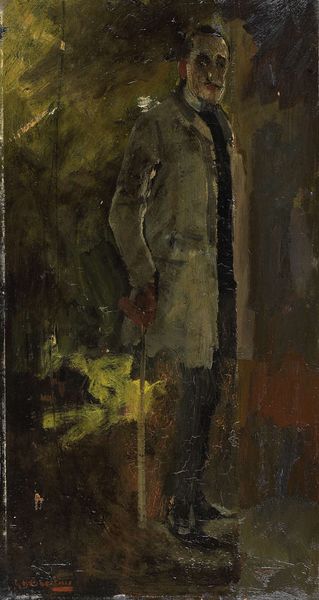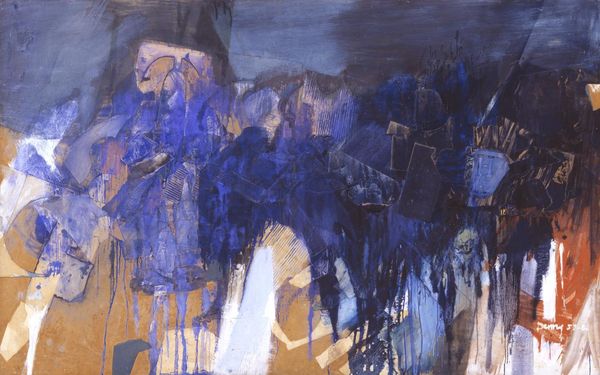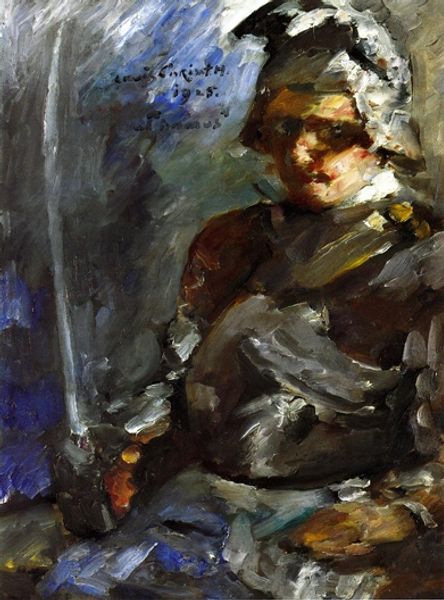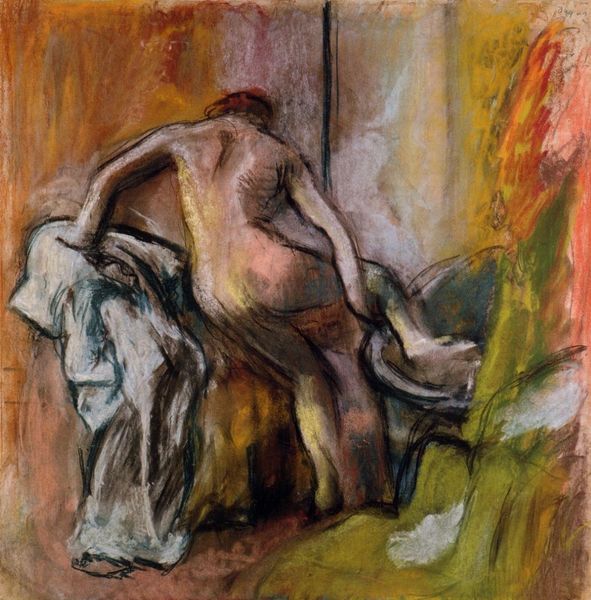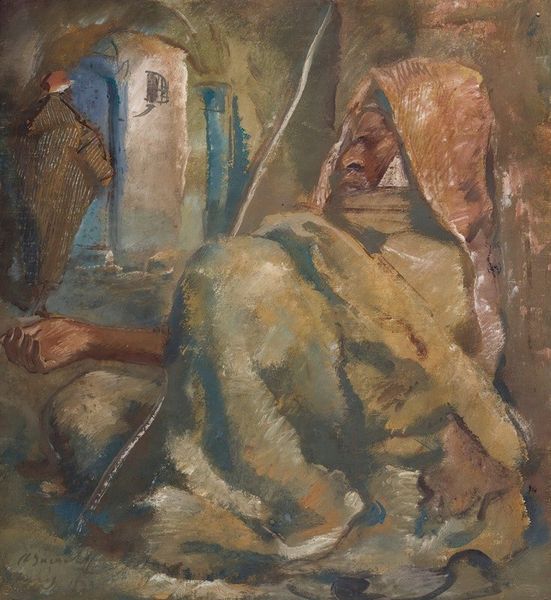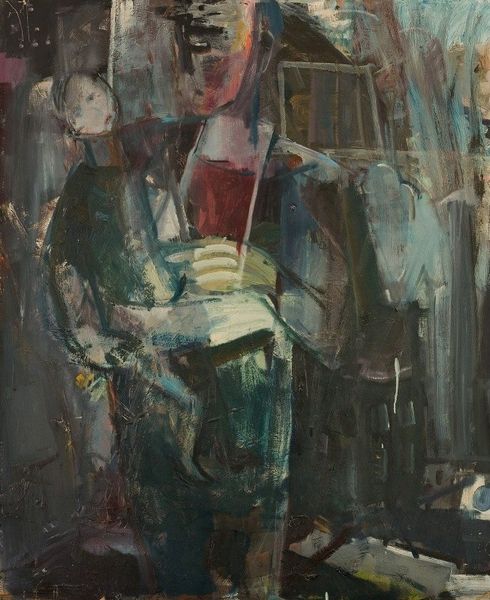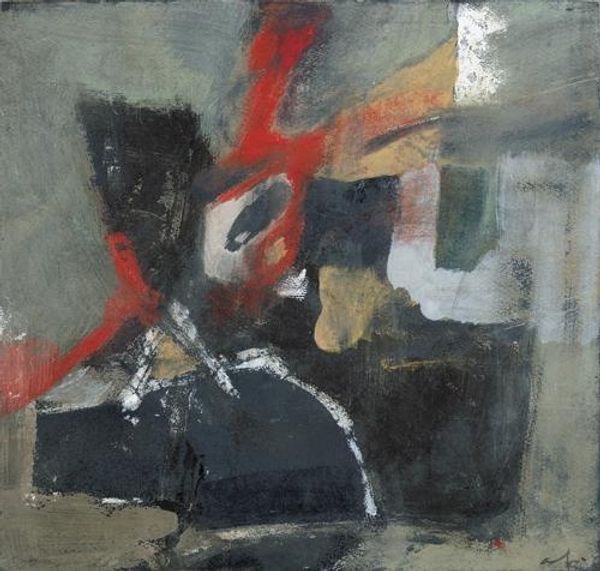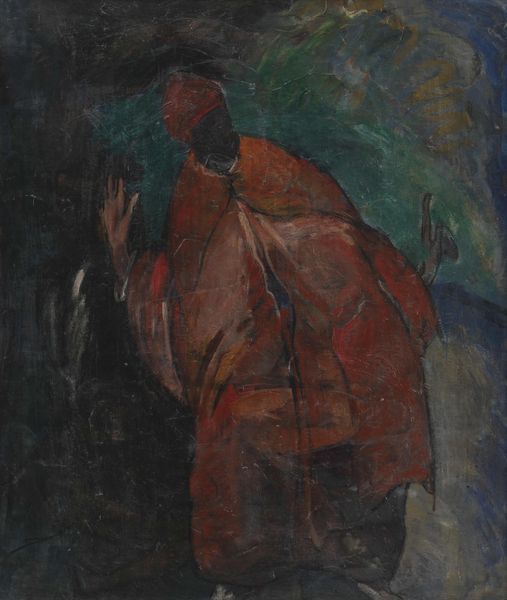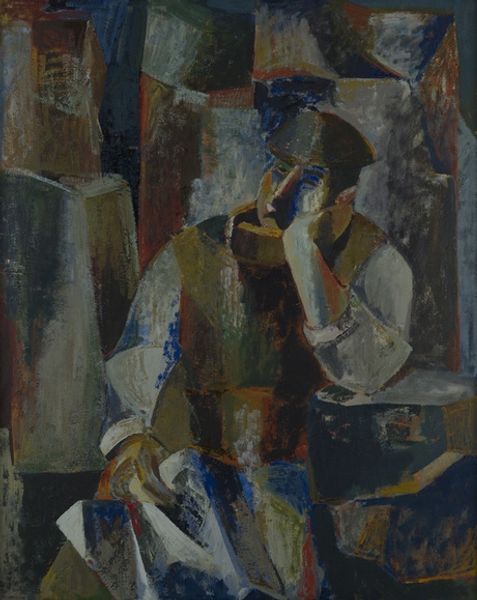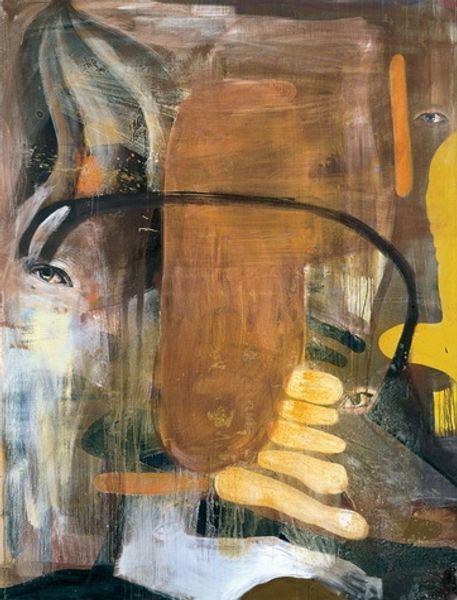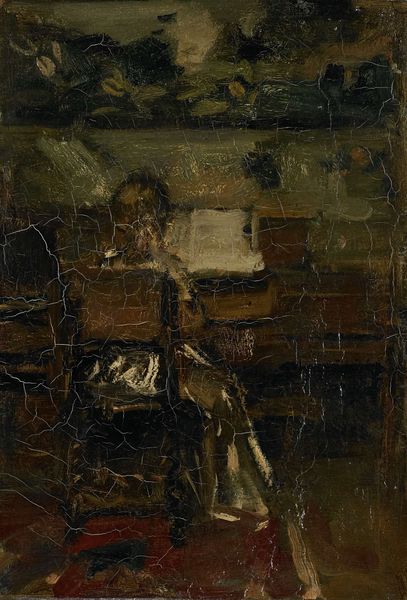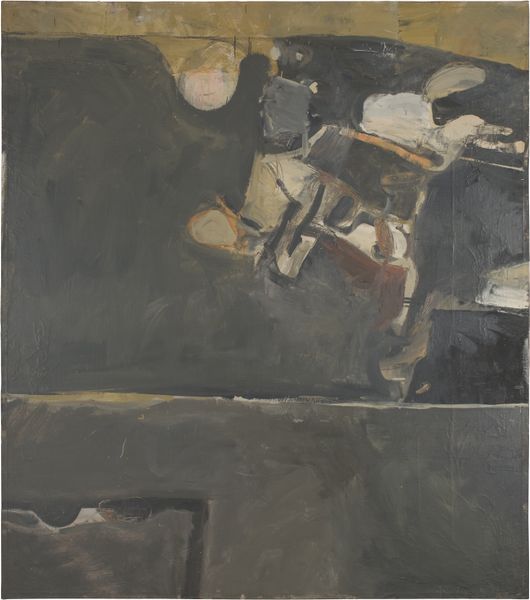
painting, oil-paint
#
portrait
#
painting
#
oil-paint
#
figuration
#
oil painting
#
intimism
#
genre-painting
#
modernism
Copyright: Ottone Rosai,Fair Use
Editor: Here we have Ottone Rosai’s "Violoncello Player," painted in 1956 with oil paints. I am struck by how solitary and melancholic the musician seems. What do you see in this piece, particularly in relation to its time? Curator: I see a fascinating encapsulation of post-war Italian identity. Rosai, deeply affected by his experiences in World War I and his subsequent disillusionment with Fascism, consistently portrays figures in states of introspective solitude, set against urban backdrops stripped of romanticism. The choice of a musician here feels especially pointed; music as both solace and a potentially subversive voice in a society rebuilding itself. What do you make of his restricted color palette? Editor: It’s quite muted, isn’t it? Blues, browns, yellows... almost as if the joy has been drained out. The cello is the brightest element, yet even its yellow feels aged, dulled. Does that restriction relate to a broader artistic movement? Curator: Absolutely. Rosai, though associated with aspects of the Futurist movement early in his career, distanced himself from its ideological fervor. Instead, his mature style, as evidenced here, grapples with a more humanistic, almost existential, perspective. His palette echoes the somber tones found in post-war Neorealist cinema, reflecting the anxieties and quiet resilience of ordinary Italians. The "genre painting" and "intimism" themes present in this piece hint at Rosai's focus. Editor: That connection to Neorealism makes sense. It’s more than just a portrait of a musician; it’s a reflection on the soul of a nation finding its voice again, even if it’s a somewhat subdued one. Curator: Precisely! And think about the cello itself—traditionally a supporting instrument, here brought into the spotlight, perhaps signifying the emergence of previously marginalized voices. It suggests an intimacy but at the same time highlights the importance of individual artistic expression emerging during times of reconstruction. Editor: I never would have considered all the nuances of context and connection there. It definitely goes beyond a musician playing their cello! Thanks for expanding my viewpoint. Curator: And thank you for opening up the conversation, seeing how art reflects on wider societal concerns is a really key element in considering any painting.
Comments
No comments
Be the first to comment and join the conversation on the ultimate creative platform.
